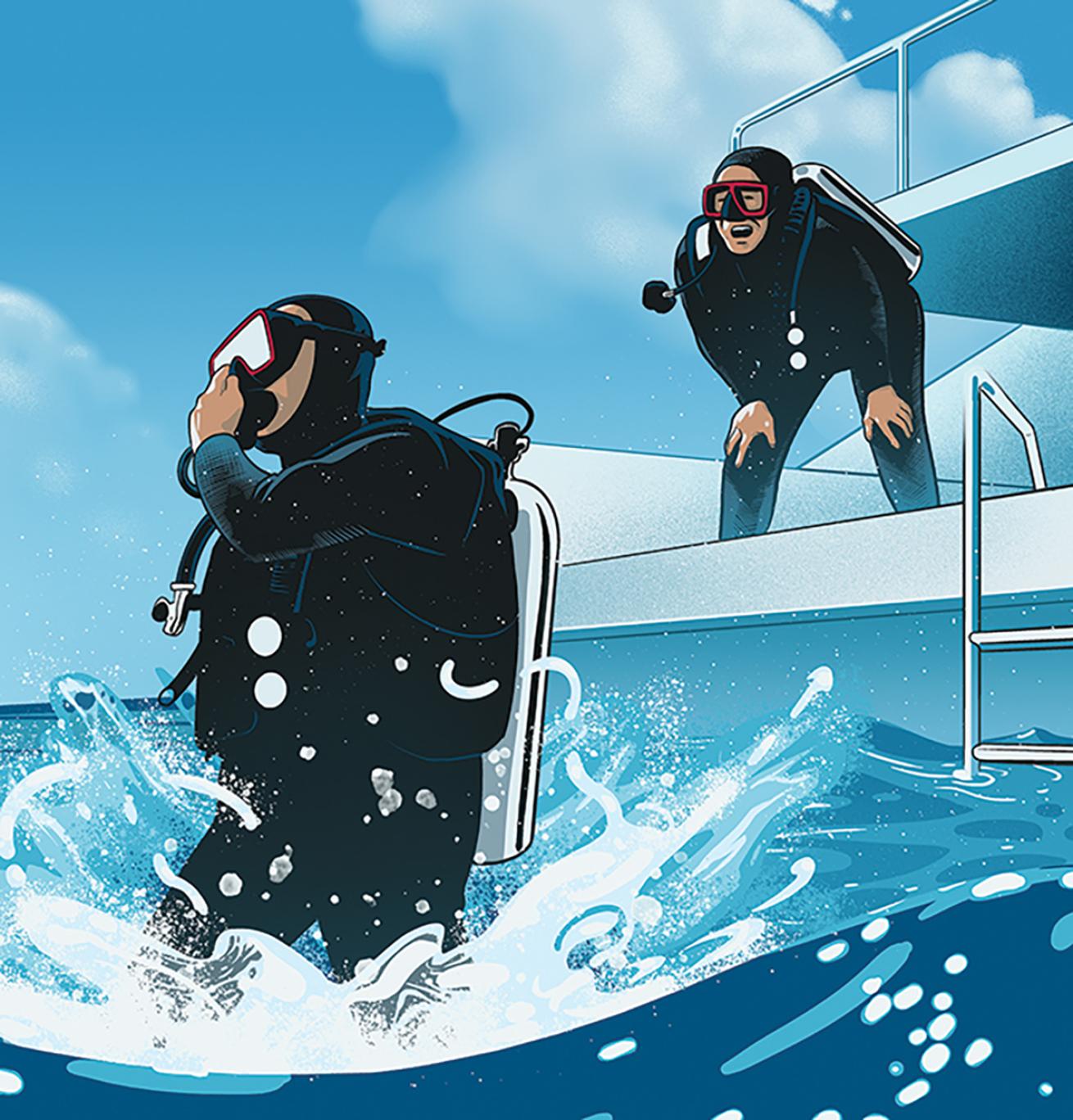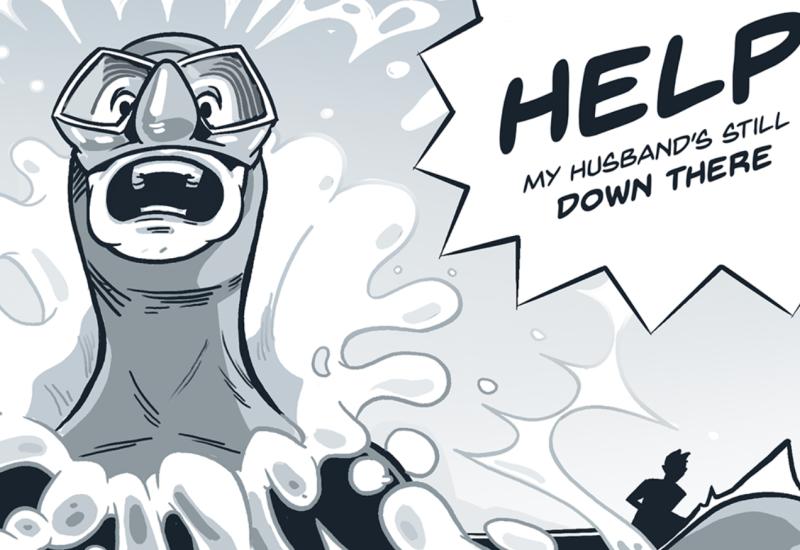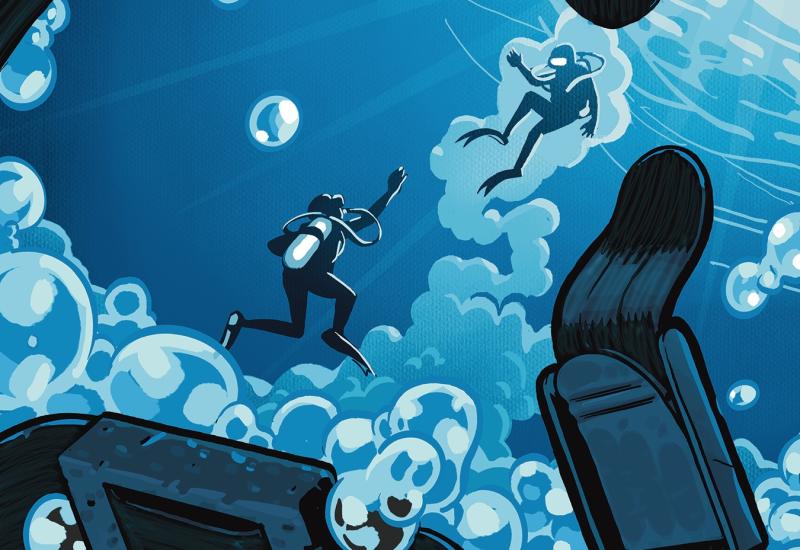Maximum Overload | Lessons for Life

Steven P. HughesComputer no-deco limits are only estimates - it can't tell what is actually going on in your body, and every diver is built differently. What is safe for your buddy may not be safe for you.
Doug and Greg were new dive buddies. They had met through an online group and discovered they both loved liveaboard diving but hated to go alone, never knowing with whom they would be buddied and whether that diver would be a good match.
The two men quickly realized they both liked to dive as often as they could, preferring to make every available dive and staying down as long as their dive computers would allow. They quickly agreed to schedule a trip together.
The Divers
Greg was 55 years old. He’d had some medical complications a few years earlier, but through diet and exercise he earned a clean bill of health from his doctor, who released him to dive with no restrictions.
Doug was 47 and in good health, but his doctor had told him he was overweight. He had a sedentary job driving a truck and wasn’t as active as he wanted to be. The job also led to a lot of unhealthy food choices.
The Dive
The two divers hit it off immediately upon boarding. The boat crew was helpful and got them squared away quickly so they could hang out and get to know each other. Both men were eager to hit the water, and confirmed that they did indeed want to make every dive.
The liveaboard offered two dives in the morning after breakfast and then moved the boat during lunch, allowing for two more dives in the afternoon. Sometimes they would move the boat again during dinner. Other times they would stay put, and the divers often had the opportunity to make a night dive.
Before the trip, the two divers had compared their dive gear online. When they got to dive computers, they discovered Greg had an older model. He decided to upgrade, to use the same one that Doug had. They wanted to make sure they were following the same profiles. They didn’t want to miss out on any dive time because one of them had a more conservative computer than the other.
The only unknown for the two men was air consumption, but they quickly found that they surfaced within a few hundred psi of each other in their tanks after every dive. This trip was shaping up to have a lot of potential.
The Accident
Four days into the weeklong trip, the buddies had fallen into a routine. They had already completed 20 dives of various depths. They stayed within their dive computer limits, never slipping into decompression status, but they pushed their computers to the limits, surfacing with only a minute or two of no-decompression time left. They made safety stops after every dive.
Doug woke with some body aches on Thursday, but he wrote them off to the physical strain of the many dives they had made so far. He promised himself he would make time for regular exercise when he got home. And he was going to eat better too.
He didn’t mention how he was feeling to anyone, thinking Greg would make fun of him since Greg was older but in better shape.
After breakfast, the two made their customary morning dives, but by lunch, Doug wasn’t feeling well. He started to gear up for the first afternoon dive, but when he realized his left arm was feeling numb and he had a throbbing pain in his shoulder and elbow, he told Greg something was wrong. Greg alerted the dive crew, who jumped into action.
All other signs were negative, so the crew quickly ruled out the likelihood of a heart attack. Doug was conscious and breathing normally. There was no chest pain, and his heart rate was normal. That left decompression sickness.
The boat crew immediately placed Doug on oxygen first aid, breathing as close to 100 percent oxygen as possible through a demand-style valve, and they alerted authorities at the closest island.
The liveaboard recalled the divers in the water and got underway to meet a boat from the nearest town that could take Doug to a hospital with a hyperbaric chamber set up to treat injured divers.
After consulting with the doctor on land, Greg also went to the island clinic for evaluation, although he was not showing any signs or symptoms of decompression sickness. Doug was eventually treated in a hyperbaric chamber with two U.S. Navy Treatment Table 6s and a Treatment Table 5 before he was released. He flew home three days later. Greg remained asymptomatic and was not treated. He met the boat back at the dock on the following Saturday and flew home as previously scheduled.
Analysis
Greg and Doug did all the same dives, using the same dive computer profiles, and received the same amount of rest. But only Doug had serious joint pain and numbness and tingling while Greg reported no symptoms. The clinic doctor performed a neurological assessment on both men. Doug had some additional areas of numbness he hadn’t noticed, called paresthesia, and Greg remained clear.
What did Greg do differently? Nothing.
The mathematical models used by dive computers and dive tables to calculate the amount of nitrogen built up in the blood are simply models. They make an estimate of the nitrogen, based on time and depth, relying on testing and practical experience to guide the calculations. But everyone is different. Further, everyone is different on different days.
You might make the same dive 99 times without incident. On the 100th dive, you might exhibit signs of decompression sickness.
That’s why it is a bad idea to max out your computer or table on every dive. On a liveaboard, skip the occasional dive, relax in the sun and make new friends on board. Greg and Doug made 22 dives in four and a half days of diving. That’s a lot of residual nitrogen buildup. Some liveaboard operations program in a rest day with land excursions in the middle of the week just to make divers take a break.
Doug was not in the same physical shape as Greg, even though he was younger. Doug was also overweight. Those factors might have played a role in Doug’s decompression sickness. We don’t have a history of their relative hydration or sleep. Scientists believe each of those things may play some role in decompression sickness, although the exact mechanism isn’t well understood.
If you’re planning a trip on a liveaboard, or even a series of dives on day charter boats, don’t push the limits of your computer or dive table. Get plenty of rest and stay hydrated. Stay fit for diving. Most of the time, diving is a calm, relaxing sport, but it does make demands on the body, and you should be in good enough shape to handle them.
Lessons for Life
- Be fit for diving. Like any active sport, overall fitness is key to doing it safely and well.
- Don’t dive with symptoms of decompression sickness. Learn to recognize the signs and symptoms, and let someone know if you have a problem.
- Don’t dive to the limits of your computer or a table. Dive computers don’t know your body, and the limits may not be appropriate for you.










